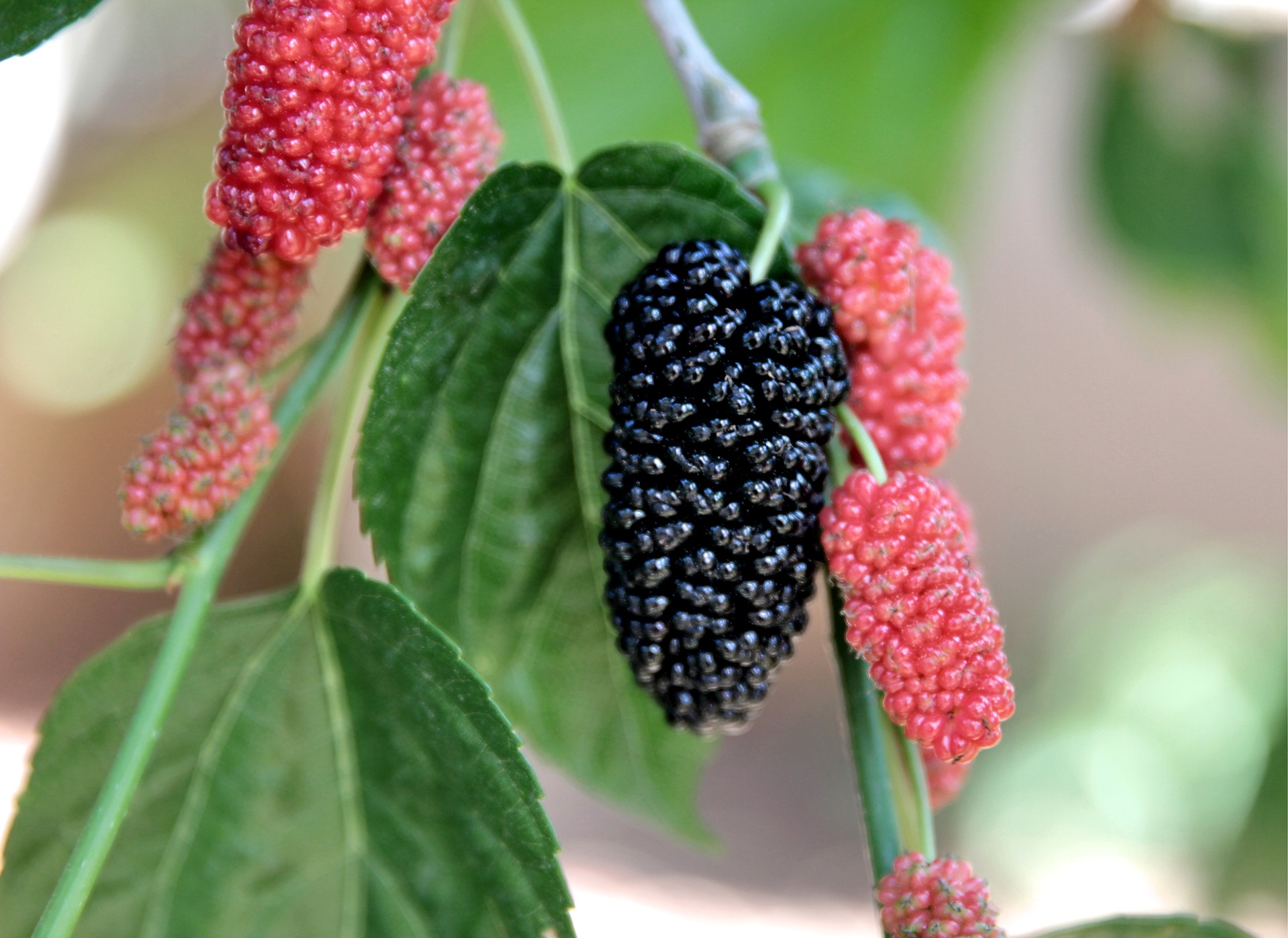Is Mulberry a Shade Tree? Why Is It Important to Deer?
Are oak trees the first to come to mind when you think about deer food preferences? There are actually plenty of other trees to plant in your wildlife orchard to attract white-tailed deer.
Besides oak trees, deer love pear and apple trees, plums, and persimmons. Deer also enjoy berries such as blackberries, raspberries, American beautyberry, and strawberries.
A tree that often escapes our attention, however, is the mulberry. Fast-growing and with sweet and tasty fruit that deer love, mulberries also add diversity to your orchard and provide a rich food source for late spring and early summer, when pears and apples haven’t had time to ripen.
Here is a helpful guide on how to make the most of mulberry trees in your deer orchard.
Growing Mulberry Trees on Your Land
Mulberry trees are hardy and adaptable. They grow fast and start bearing fruit by their third growing season. They are hardy to hardiness zones 5-10 and are found throughout the United States, from Texas to Indiana.
Mulberry trees thrive in cool and moist areas but once established they are drought-tolerant. They like well-drained and fertile soil but don’t like having their roots stuck in wet soil.
Mulberry trees are not shade trees. They are deciduous trees that lose their leaves during the winter months. Mulberries grow best when they receive at least six hours of direct sunlight daily. Even so, they will tolerate light shade, which is why they can sometimes grow under taller trees as well. Thanks to their deep rooting system, they can also grow on slopes and help protect topsoil from erosion.
What Makes Mulberry Trees Attractive to Deer?
Each deer can eat ten pounds of mulberries a day, which is often more than one-third of the entire crop of a mulberry tree! That’s how much deer like these delicious treats.
Mulberries Are Sweet and Healthy
Mulberries are sweet, which deer greatly appreciate as they provide necessary sugars and carbohydrates. They are brimming with vitamins and minerals, which makes them an ideal food source for deer. They also contain a lot of fibers, which are great for the deer’s digestive system.
Mulberry Trees Ripen When Other Fruit Trees Are Not Ready
You will find ripe mulberries in late spring and early summer, well before apples, pears and acorns are ready for picking. Mulberries are also ripe before their cousins, blackberries and raspberries, thus filling an important gap in the deer diet.
Mulberry Trees Have Huge Crops
Because mulberry trees grow so fast, they can produce significant crops within 3-5 years of planting. Your deer population will thus enjoy a good crop of tasty and sweet berries without having to wait for years for the tree to grow.
Deer Like Browsing Mulberry Seedlings and Leaves
Besides mulberries, deer enjoy eating the leaves, branches, and fresh seedlings sprouting underneath mature mulberry trees. They will happily browse young branches and tips as well as the fresh leaves in early spring. They also like to rub their antlers against the bark of the mulberry trees.
You may need to protect your young mulberry trees from deer in their first years if you want them to grow tall and have crops. Fencing your trees could be a good temporary solution until the trees get bigger and are better able to withstand a deer’s attention.
Your Deer Population Will Face Competition from Birds and Squirrels
If you like the idea of a wildlife orchard, mulberries are an ideal choice because they attract birds and squirrels as well as deer. Adding mulberries to your plot will help you create a natural habitat for all sorts of wildlife to enjoy around your land.
Maintaining a Mulberry Tree
Mulberries are pretty sturdy and hardy. They require little pruning, especially when they are young. We only suggest you prune them to keep their branches low enough to be easily reachable by deer, as they won’t be able to reach the mulberries if your tree grows too tall.
Once planted and settled, they are drought-tolerant, although the complete lack of water could produce smaller crops with smaller, drier fruit.
Mulberries are dioecious, which means they are either male or female. Only female trees grow crops, so you will need to plant several specimens to ensure that you are planting a female one.
Our Wildtree shop carries mulberry trees. If you are looking to create your very own wildlife paradise, call now 346-707-6024, or email [email protected] for advice, tips, and how-to guides for guaranteed success. We will be happy to help you choose the right trees for your hardiness zone. Be sure to include a few mulberry trees for sale should they fit your needs. Remember, provenance is a big deal. Benefit from free shipping on all orders and a 10% discount on orders over $1,000 and get 40% off when you pick up your order!


